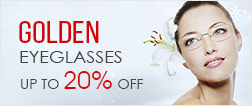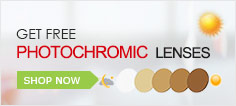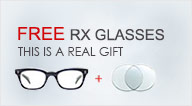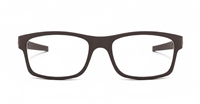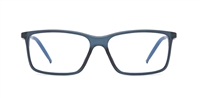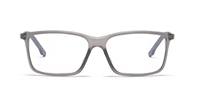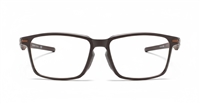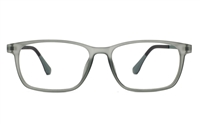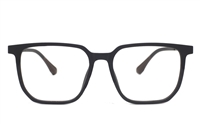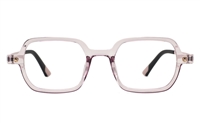When you reach the point of not being able to read up close without stretching your arms to the limit, you may need to consider single-vision reading glasses. Reading glasses come in two main styles: full frames, in which the entire lens is made in the reading prescription, and half-eyes, the smaller "Ben Franklin" style glasses that sit lower down on the nose.
Full reading glasses are suitable for people who spend a great deal of time concentrating on material close-up. If you try to look up and across the room through the reading lenses, everything appears blurry.
In contrast, half-eye reading glasses allow you to look down and through the lenses for near work, and up and over them to see in the distance. Generally, people who have never needed glasses in the past will start out with a pair of reading glasses rather than bifocals or no-line progressive lenses, which are usually a better choice if you have a need for distance as well as near correction.
Handy accessories for temporary use, such as an evening in a dimly lit restaurant, include tiny foldable readers that fit in pen-sized cases and magnifiers that hang around your neck like a pendant. You may have even seen plastic lenses mounted in credit card-sized holders that slip easily in a wallet — horrible for reading a book, but fine for those moments of desperation when you just want to know if the menu says "filet de boeuf" or "foie gras."
Also available are tinted reading glasses with UV protection for wearing outdoors in the sun; a popular type is the sunglass bifocal, with a nonprescription upper half for looking far away and a reading prescription in the lower half for close up.
How to choose reader correctly? ( Helpful:1 ) Back »
Recommended Glasses at Cheap Prices For You
Now:$39.99
Was:$69.99Now:$39.99
Was:$69.99Now:$39.99
Was:$69.99Now:$39.99
Was:$69.99Now:$39.99
Was:$69.99Now:$47.99
Was:$79.99Now:$47.99
Was:$79.99Now:$41.99
Was:$69.99


 FinestGlasses.com
FinestGlasses.com








